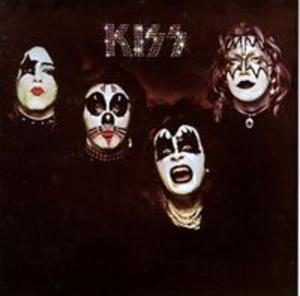The top ten fighters of World War 2. It should be noted that this list attempts to balance technology and performance with actual wartime value and service record, rather than ranking the planes purely on one basis or another.
10. Zero (Japan)
The Mitsubishi Zero had a profound impact on early WW2 and was a staple in her air forces up until the ultimate surrender of Japan. It was extremely maneuverable and known for its acrobatics, however it was paper-thin compared to its western counterparts and helplessly unstable while diving. F4Fs and Zeros duked it out on even footing for quite a while, but the arrival of the F6F and F4U eclipsed the Zero’s authority, opening the way for newer, tougher Japanese fighters to be developed, many of which surpassing it in firepower and durability, but none catching up with the West’s technological edge nor competing with the Zero’s historical significance.
9. P-51 (USA)
The glamorous “Mustang” was the perfect plane for its intended role; long-range escort and maximum airtime. Unfortunately, its also become one of the most overrated and romanticized planes of WW2. Its durability and dogfighting maneuverability in certain situations were questionable compared to fighters which weren’t required to possess long-distance characteristics. Regardless, it makes it high on this list simply because it was instrumental in maintaining aerial control and bomber protection in the late western theater, and thus an uncountable part of human history.
8. F4U (USA)
The Chance Vought F4U Corsair, nicknamed “Whistling Death” by its Imperial Japanese victims, is one of the most instantly recognizable planes of WW2 due to its famous bent-wing frontal silhouette. The Corsair was responsible for 2,140 enemy kills and had outstanding performance characteristics, speed, and weapons modularity, even if a bit difficult to land on a ship. It never quite achieved the backbone status of the F6F, but surely would have been a worthy substitute had that plane never been. It served well after the war, seeing action in Korea in the hands of the US and being produced until 1953.
7. P-47 (USA)
The “Thunderbolt” (nicknamed the “Jug” by pilots for its ungraceful barrel-shaped fuselage) was one of the toughest and most versatile fighter planes in history. It was built to house an armor-shredding arsenal of eight .50 caliber machine guns and accommodate monstrous engine variants. This heavy and solid platform was used for everything from hunting Me 262 jet-fighters and airborne V2 rockets to carrying out its own rocket-armed attacks on ground targets like factories and docked ship columns, but is perhaps most famous for its durability and high-altitude dogfighting performance. The over-built ‘linebacker’ of WW2 fighters’ lack of low- and mid-altitude dogfighting finesse is all that keeps it from ranking higher.
6. Fw 190 (Germany)
The Focke-Wulfe 190 was a design intended to replace the Bf 109 (no easy task). While it never enjoyed the peerless success of the Bf 109, it was, on paper at least, a superior plane in performance. Perhaps its only major flaw was that, as much as it had improved over the Bf 109, the late-war allied competition had improved even more, and many legendary German aces had already become Bf 109 purists.
5. Tie: La-7 and Yak-3 (USSR)
The Lavochkin 7 is considered by some to be the best propeller fighter of mid-WW2, surpassing its British and German peers in speed and turning ability. This was the plane flown by the top Soviet ace Ivan Nikitovich Kozhedub. The Yak-3 was arguably its equal, also outperforming its Western-European counterparts in most areas. The air-cooled La-7 was said to be more accustomed to handling the brutal temperature changes of Russian flying. Top French ace Marcel Albert flew both the Yak-3 and P-51 Mustang, citing the Soviet Yak-3 as the superior plane.
4. F6F (USA)
The Grumman Hellcat was the muscle of US air operations in the Pacific theater. It accounted for over 75% of aerial kills in the theater (5,156). It was armed with six .50 caliber machine guns. It held a jaw-dropping 19:1 kill ratio against Japanese fighters, utterly outclassing them and rendering many Zero pilots into involuntary kamikaze. It was known as much as the P-47 for its uncanny survivability under fire.
3. Spitfire (UK)
The Supermarine Spitfire was the vanguard of the British air force in world war 2. Its contests with the Bf 109 are both romantic and a fascinating look into the clashing fighter design doctrines of Germany and the United Kingdom. The Spitfire was a tight-turning and nimble plane in flight, beloved by its pilots (and for its looks, by the British people at large, to this day). Along with the Hawker Hurricane, it played an instrumental role in stopping the mixed fighter/dive-bomber (Stuka) German invasion force in the Battle of Britain. Its sea-bound variant was a plane capable of turning like a Zero, but with the spine and muscle of a Western fighter.
2. Me 262 (Germany)
In sheer performance, the Me 262 is untouchable. Why? Simply, it was a jet engaged in combat with propeller planes. While the metal monoplane of WW2 was a gradual, if dramatic, evolution compared to the early biplanes of WW1, the late-war jet-powered machines of Nazi Germany were several decades ahead of their time in one single leap. Just the sound of an Me 262 was completely alien to most human ears in 1945, never mind the speed compared to its opposition. Unfortunately, despite war-leading performance, a lack of mass production and late introduction keeps it from the number one spot via minimal historical impact (outside of its revolutionary, life-changing impact on aerospace technology itself, of course).
1. Me Bf 109 (Germany)
In pure statistics, and perhaps in notorious aesthetics, the Messerschmidt Bf 109 is unrivaled.
A Goliath 35,000+ units were produced with many ‘official’ and ‘unofficial’ variants. Perhaps most impressively, the 109, which either outperformed or remained competitive with every opponent it met until 1945 (and in non-German hands, far beyond 1945), first saw action with German interventionists in the Spanish civil war prior to world war 2’s official outbreak. It was a timeless and modular design, and although the early British Spitfire could out-turn most 109 pilots, they were out-gunned by the German machine in regards to the new “boom and zoom” combat style of WW2.
The momentum and speed of diving attacks, followed by rapid climbs to safe altitude, had transcended the two-dimensional turning dances of WW1, and the Bf 109 fit the new role like a glove early in the war. The top-scoring ace in aviation history, Erich Hartmann, downed 352 allied pilots throughout the war. The 109 was his preferred plane, so much so that he protested their retirement and destruction post-war. Gerhard Barkhorn, another German 109 pilot, scored 301 kills. Günther Rall claimed all 275 of his aerial victories in `the 109. The top non-German ace of the war, Finland’s Eino Juutilainen, scored 58 of his 94 kills in a German-designed, Finnish-operated Bf 109. The list goes on.
To put that into perspective, the top-scoring British, American, Japanese, and Soviet aces of WW2 held records of 38, 40, 58, and 62 kills, respectively. Even the 8th-best scoring German ace, Heinz Bär, another 109 pilot, possessed more aerial kills than the top aces of Britain, America, Japan, and the USSR combined (220).




